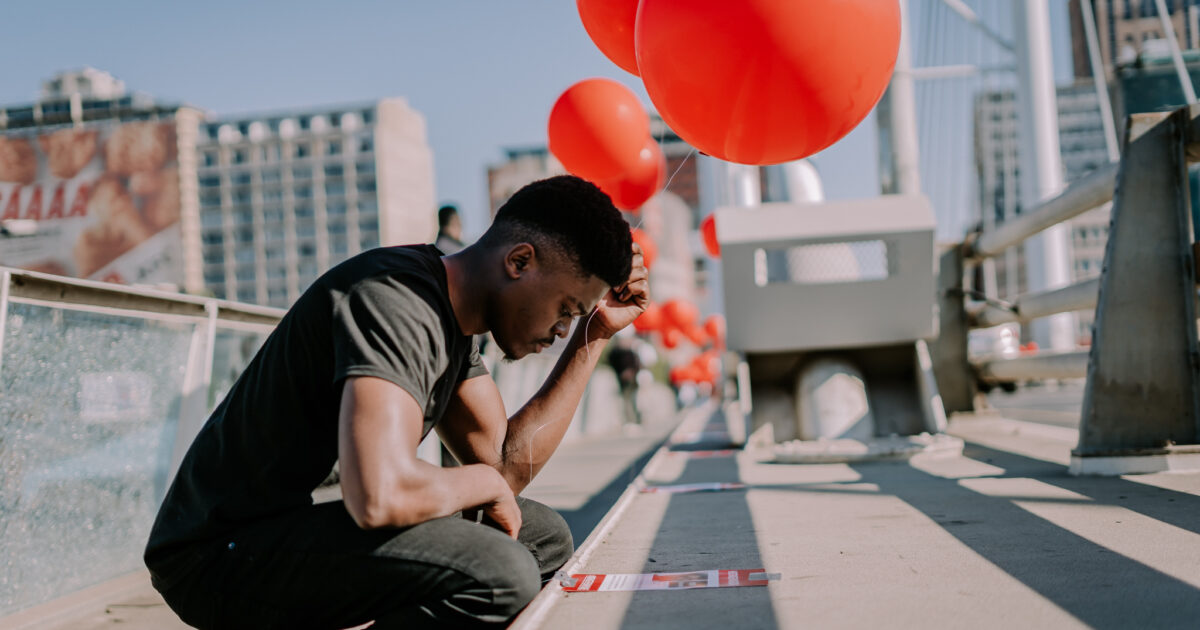Banner
Nelson Mandela Bridge makes hostage missing link

Johannesburg woke up last Friday, 27 October, to big red balloons waving across the Nelson Mandela Bridge, which links Braamfontein to Newtown, but it wasn’t a marketing ploy or an elaborate wedding proposal. Each balloon was attached to a poster of one of the 221 hostages being held by Hamas in Gaza since the 7 October terrorist attack on Israel. This number has now increased to 240. This audacious display of solidarity was to bring public attention to the plight of the abductees and call for their safe release.
I set my alarm for 05:30, and made my bleary-eyed way to Beyachad on 27 October, where many Jewish communal organisations are housed, including the South African Jewish Board of Deputies (SAJBD) and the South African Zionist Federation (SAZF). A WhatsApp message marked “highly confidential” said secrecy was necessary as we had to handle this task as a “guerilla-style operation”.
We set off into the early morning smog of the Johannesburg inner city in Ubers from Beyachad to Braamfontein. Once assembled, we were briefed by SAJBD National Director Wendy Kahn, a feisty, natural-born activist. A truck opened its loading bay. Each volunteer was handed two large red helium-filled balloons on a string tied to black weights.
The mission was to walk onto the nearby Nelson Mandela Bridge, which stretches over railway sidings and tape one balloon to each picture of the 221 hostages captured by Hamas. Their posters had also been affixed to the bridge in two-metre intervals by volunteers who got up even earlier than I did.
We had to work quickly to avoid being stopped by the Johannesburg Metro Police Department – there was a squad car in the vicinity. One of the volunteers burst out crying as she looked at the faces of the hostages, ranging in age from a few months to people in their eighties. Infants, children, youth, mothers, father, sisters, brothers, grandparents. Each looking so full of life and love in their photographs. Each poster named and displayed a different hostage, gave his or her age, and said “On October 7th, more than 200 innocent civilians were abducted from Israel into the Gaza Strip. Their whereabouts remain unknown. More than 3 000 men, women, and children, ranging in age from three months to 85 years were wounded, murdered, beaten, raped, and brutally separated from their loved ones by Hamas. #BRINGTHEMHOME.”
Setting up all the balloons took three trips from volunteers – in skirts, jeans, and sheitels – amid photographers, videographers, and drones with cameras flying aloft. We had to avoid the balloon strings getting tangled. Pedestrians crossing the bridge saw the balloons and read the posters. One was so moved, she asked if she could assist in her lunch time.
Soon, 221 round red balloons were bobbing in the wind on the bridge. Johannesburg followed cities like Amsterdam and Melbourne that mounted similar displays to focus attention on the plight of these captives. This display came hot on the heels of the illumination of the well-known, roller-towel-shaped Ponte building in the Hillbrow skyline with the blue and white of Israel’s flag a few weeks ago.
The balloons gave a lift to a despairing, embattled South African Jewish community, and demonstrated solidarity with the hundreds of families praying for the safe return of their loved ones from Gaza.
I asked Benji Shulman of the SAZF why it was important for him to be there. “It’s now three weeks since the hostages were taken,” he said. “The world wants to move on, and could forget that they are still being held. We have to remind the world that they are still captured. We have to remind the world that this issue still needs to be solved.”
Of the choice of the site, Shulman said, “Nelson Mandela has frequently been appropriated to causes he didn’t agree with. In his autobiography Long Walk to Freedom, he opposed terrorism. He would never have supported Hamas like this. Being at the Nelson Mandla Bridge symbolises that South Africans are opposed to extremism, even if the African National Congress isn’t.”
Michael Kransdorff, the chairperson of the Jewish National Fund (JNF) of South Africa, was also sticking down balloons. “As the JNF, we’re committed to support the people of southern Israel,” he said, “and to bring attention to the fate of the hostages.” He mentioned the empty Shabbat table with 221 places that would be laid out in front of KosherWorld supermarket in Glenhazel later that day. “We support all events that bring attention to the hostages, and call for their immediate and unconditional release,” Kransdorff said.
Said Kahn, “Internationally, balloons have been flown to create awareness about the hostages being held by Hamas in Gaza. We wanted to find an iconic South African location for this campaign. It’s also so meaningful to have the name Nelson Mandela attached to this South African balloon memorial. This bridge is such a landmark in the city of Johannesburg.
“What has been moving has been the conversations with people walking by. You can feel the level of their empathy with this horror. We’re hoping the campaign will go viral and bring greater awareness to this dire situation.”
“Sticking up pictures of each victim made it very real for me,” Kahn said. “There are very young children and very elderly people. I also have a dear personal friend, Vivian Silver, aged 74, who is one of the hostages.”
The Nelson Mandela Bridge itself is in a parlous state – begrimed by graffiti, with several of its glass panels shattered, lying on the bridge, or entirely missing. It’s a symptom of a slowly decaying, neglected inner city. It made a fitting site for the sadness surrounding the fate of the kidnappees.
